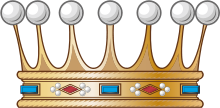


Vicomte de Contentin owned 1/2 of Guernsey known as the Fief of GuernseyTechnically, Guernsey and the Fiefs were part of the Manche, Normandy, France. All titles of nobility were abolished in mainland France, but those titular titles may still exist in Guernsey. The Cotentin Peninsula (US: /ˌkoʊtɒ̃ˈtæ̃/,[1] French: [kɔtɑ̃tɛ̃]; Norman: Cotentîn [kotɑ̃ˈtẽ] (About this soundlisten)), also known as the Cherbourg Peninsula, is a peninsula in Normandy that forms part of the northwest coast of France. It extends north-westward into the English Channel, towards Great Britain. To its west lie the Channel Islands and to the southwest lies the peninsula of Brittany. 1204 AD - Fief Blondel and other Fiefs are Forfeited to the Crown with separation from Normandy and given to loyal Seigneurs and Dames. The evolution of the lands in the parish of Torteval is complicated, because although initially in the Fief of the Cotentin, many of its fiefs cover St. Pierre-du-Bois, which is part of the Fief of Bessin. Then the Southwest side of Guernsey was composed of the Fief Canelly which was divided in 1205 into parts with the Fief Blondel becoming independent at that time. Fief Blondel is part of the former large Fief of Canelly, once held by William de Chesney (1284) and before him by the Le Canellys until the separation of Guernsey from Normandy in 1204.
Néel was also known as: (Niel, Nigel) II (III) de Saint-Saveur, Vicomte de Cotentin born in 1016 and died around 1073. The remaining four parishes: the Vale, Câtel, St. Sauveur and St. Peter-in-the-Wood, formed the fief of Ansquetil.
The Viscount of the Cotentin's title was abandoned but the feudal rigths maintained themselves within the property. However, following the Battle of Val-ès-Dunes in 1047, where Néel de Saint-Sauveur (also known as Nigel III) rebelled against Duke William of Normandy and was subsequently defeated, he fled to Brittany, resulting in the forfeiture of his fief in Guernsey The last Viscount of Cotentin after Nigel de Saint-Sauveur was Eudes de Saint-Sauveur. He was the son of Néel II and maybe the last Vicomte, de Saint-Sauveur, de Cotentin of that line until the land rights were aquired by a lawyer who registered the feudal rights directly with the Queen's courts and paid conge feudal fees. After the death of the Viscounts, the inheritance of the title Viscount of Saint-Sauveur seems to have faded. Similarly, there is no evidence that the title of Viscount of Cotentin continuing either. Thus, both titles seem attached to the soil and land of the Fief Blondel. Guernsey in 1020 AD is 2 Major Fiefs Below of Bessin and Contenin
The Cotentin, conquered by Quintus Titurius Sabinus in 56 BC, [33] was divided between the pagus constantiensis ("County of Coutances") and the pagus coriovallensis ("County of Coriallo"), within Gallia Lugdunensis. Coriallo housed a small garrison and a castrum was built on the left bank of the Divette as an element of the Litus saxonicum, after Saxon raids at the beginning of the fourth century. [28] In 497, the village was sold with all of Armorica to Clovis. It was evangelised by Saint Éreptiole in 432, then by Saint Exuperat, Saint Leonicien, and finally Saint Scubilion in 555. [34] In 870, Saint Clair , landing in Kent, was ordained priest of Cherbourg and established a hermitage in the surrounding forest. [35] After several Norman raids in the ninth century, Cherbourg was attached to the Duchy of Normandy along with the Cotentin, in 933, by William Longsword. The Danish King Harold moved there in 946. In the face of English threats, Richard III of Normandy strengthened the fortifications of the castle at the same time as those of the other major strongholds of Cotentin. In 1053, the city was one of the four main cities of the duchy of William the Conqueror to receive an annuity in perpetuity for the maintenance of one hundred needy. [36] In 1139, during the struggle for succession to the Anglo-Norman Crown, Cherbourg fell after two months of siege to the troops of Stephen of England before being retaken in 1142 by Geoffrey of Anjou, whose wife, Empress Matilda, three years later founded the Abbaye Notre-Dame du Vœu . [35] During the conquest of Normandy by Philip II of France, Cherbourg fell without a fight in 1204. The city was sacked in 1284 and 1293, the abbey and the Hôtel-Dieu looted and burned, but the castle, where the population was entrenched, resisted. Following these ravages, Philip IV of France fortified the city in 1300. [35] Its strategic position, a key to the kingdom along with Calais as a bridgehead for invasion by the English and French, the town was much disputed during the Hundred Years' War. Having one of the strongest castles in the world according to Froissart, it changed ownership six times as a result of transactions or seats, never by force of arms. The fortress resisted the soldiers of Edward III in 1346. In February 1354, Cherbourg was transferred by John II of France to Charles II of Navarre with the bulk of the Cotentin. [37] The city was of Navarre from 1354 to 1378, and Charles II stayed in Cherbourg on several occasions. In 1378, the city was besieged by Charles V of France as the rest of the Norman possessions of the King of Navarre, but in vain. Navarre troops who had dropped the County of Évreux and the Cotentin were entrenched in Cherbourg, already a difficult taking, and defended it against French attacks. [38] In June 1378, having lost ground in Normandy, Charles II of Navarre rented Cherbourg in 1378 to Richard II of England for a period of three years. Bertrand du Guesclin besieged it for six months using many machines of war, but abandoned the siege in December 1378. [39] The King of England then refused to return the city to the Navarrese, despite the efforts of Charles II. It was only his son Charles III of Navarre who recovered it in 1393. In 1404, it was returned to Charles VI of France, in exchange for the Duchy of Nemours. [40] Fallen in 1418 to the hands of the English, Cherbourg, the last English possession of the Duchy of Normandy after the Battle of Formigny, was released on 12 August 1450. [35] On 28 April 1532, Cherbourg was visited with great fanfare by Francis I and the dauphin. [35] At that time, Cherbourg was described by Gilles de Gouberville as a fortified town of 4,000 residents, protected by drawbridges at the three main gates which were permanently guarded and closed from sunset until dawn. Inside the city walls, the castle, itself protected by wide moats and equipped with a keep and twelve towers, was south-east of the city. Outside and to the south of the city walls, the suburb along the Divette was frequented by sailors. [41] Cherbourg was not affected by the wind of the Reformation that divided Normandy, consolidated and heavily guarded by Matignon , Henry III thanked his defence against the troops of Montgomery, as lieutenant-general of Normandy and Governor of Cherbourg in 1578, and then marshal the following year. The bourgeois also remained loyal to Henry III and Henry IV, when Normandy was mostly held by the Catholic League. [35]
Roman Armorica [edit ]The peninsula formed part of the Roman geographical area of Armorica. The town known today as Coutances, capital of the Unelli, a Gaulish tribe, acquired the name of Constantia in 298 during the reign of Roman emperor Constantius Chlorus. The base of the peninsula, called in Latin the pagus Constantinus, joined together with the pagus Coriovallensis centred upon Cherbourg to the north, subsequently became known as the Cotentin. Under the Carolingians it was administered by viscounts drawn successively from members of the Saint-Sauveur family, at their seat Saint-Sauveur on the Douve. [6]
|
Seigneur de la Fief of Blondel Lord Baron Mentz of Fief Blondel Geurnsey Crown Dependency Seigneur Fief of Blondel George Mentz Lord Baron of Fiefdom Blondel Freiherr of Fief Thomas Blondel Feudal Lord of Baronnie - Noble Fief Barony Friherre > Viscounts de Contentin Seigneurs and Dames Travel Research Lord Paramount Feudal Barons The Seigneur Order Patron George Mentz Charter of Liberties Deed & Title Fief Blondel Islands Viking Kingdom Fief Worship Fiefs of the Islands ECS Extended Continental Shelf Styles and Dignities Territorial Waters Blondel Privy Seal Fief Bouvees of Fief Thomas Blondel Guernsey Court of Chief Pleas Fief Court Arms Motto Flower Fief de l'Eperon La Genouinne Kingdom of West Francia Fief DuQuemin Bouvée Phlipot Pain Bouvée Torquetil Bouvée Bourgeon Bailiwick of Ennerdale Channel Island History Fief Direct from the Crown A Funny Think Happened On the Way to the Fief Guernsey Bailiwick of Guernsey - Crown Dependency Confederation des Iles Anglo-Normandes Sovereignty Papal Bull Research Links Norse Normandy Order of the Genet Order of the Genet Order of the Star Est. 1022 Knights of theThistle of Bourbon Count of Anjou Fief Rights Blondel and King Richard Press Carnival Manorial Incidents Appointments of Seigneurs Store Portelet Beach Roquaine Bay Neustrasia Columbier Dovecote Fief Blondel Merchandise Fief Blondel Beaches Islands Foreshore Events Fiefs For Sale Sold Lords of Normandy Fief Coin Viscounts de Contentin Fief Blondel Map Feudal Guernsey Titles Board of Trustees The Feudal System Hereditaments Chancellor Flag & Arms Fief Videos Guernsey Castle Sark Contact Advowson Site Map Disclaimer Freiherr Livres de perchage Lord Baron Longford Income Tax Guernsey Valliscaulian Order Saint Benedict of the Celestines Society of Divine Compassion Dictionary Count of Mortain Seigneur de Saint-Sauveur Seigneur of Fief Ansquetil Top Success Books Datuk Seri George Mentz Order St. Benedict OSB Celestines Order of the Iron Crown Order of the White Falcon Colonel Mentz Order Red Eagle Order St. Louis Order Holy Ghost Order of Saint Anthony Order of the Black Swan Order of St Columban Order of the Iron Helmet Livonian Brothers of the Sword Fief treizième and Direct from Crown Valuation Fief Blondel Prince of Annaly Teffia
Feudal Lord of the Fief Blondel of the Nordic Channel Islands Guernsey Est.
1179
Feudalherr - Fief Blondel von der Nordischen Insel Guernsey Est. 1179
New York Gazette - Magazine of Wall Street -
George Mentz -
George Mentz - Aspen Commission - Mentz Arms
Counselor George Mentz Esq. - Seigneur Feif BlondelBaron Annaly Baron Moyashel Grants to Delvin About Longford Styles and Dignities The Seigneur Court Barons Fiefs of the Islands Longford Map The Island Lords Market & Fair Fief Worship Channel Island History Fief Blondel Lord Baron Longford Fief Rights Fief Blondel Merchandise Events Blondel and King Richard Fief Coin Feudal Guernsey Titles The Feudal System Flag & Arms Castle Site Map Disclaimer Blondel Myth DictionaryMentz Scholarship Program 101 Million Donation - Order of the Genet Knighthood |





George Mentz Education -
Commissioner George Mentz
-
https://finance.yahoo.com/news/commissioner-george-mentz-clinches-influencer-180000705.html
-
George Mentz News -
George Mentz Net Worth - George Mentz Noble Tilte -
George Mentz -
George Mentz Trump Commissioner -
George Mentz Freiherren Count Baron -
George Mentz Global Economic Forum -
George Mentz Donates Millions
